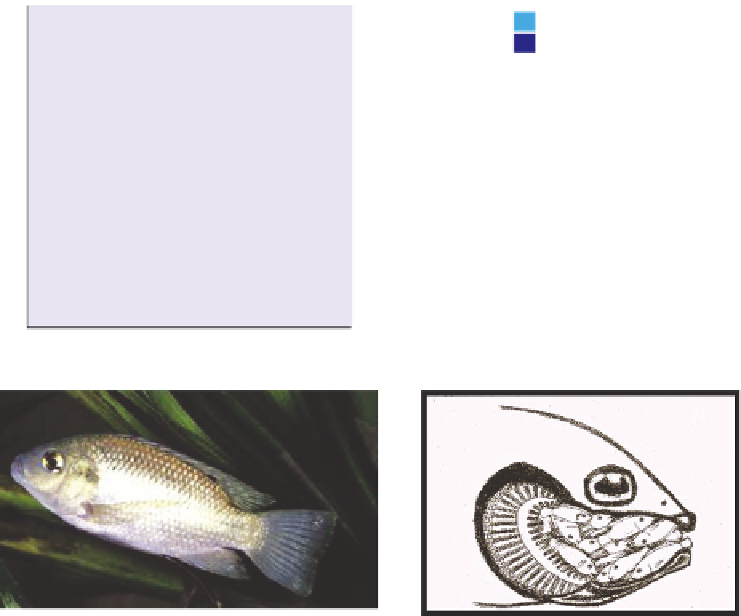Biology Reference
In-Depth Information
(a)
(b)
100
100
Male care
Male desertion
Female care
Female desertion
80
80
60
60
40
40
20
20
0
0
Control
n
= 14
Male Bias
n
= 12
Female Bias
n
= 21
Control
n
= 14
Male Bias
n
= 12
Female Bias
n
= 21
Fig. 8.4
St Peter's fish: a mouth brooder. Photo and drawing © Sigal Balshine.
Experiments to test how opportunities for further matings influence: (a) male care and
(b) female care in St Peter's fish. Three conditions are tested: Control (2 male, 2 females);
Male bias (3 males, 1 female); female bias (1 male, 3 females). Available females
increases male desertion (a), while available males increases female desertion (b). From
Balshine-Earn and Earn (1998).
Sigal Balshine-Earn and David Earn (1998) performed experiments in tanks. Firstly,
they varied the opportunities for further matings. When the sex ratio was female-biased,
males increased their likelihood of desertion. Conversely, when the sex ratio was male-
biased, female desertion increased (Fig. 8.4). Therefore, both males and females deserted
their offspring more frequently when the costs of care were higher (in terms of lost
mating opportunities). Next, they varied the benefits of biparental care by pairing same-
sized females with males that were larger than the female, the same size or smaller.
Smaller males have smaller buccal cavities so are able to carry fewer eggs and fry.
Therefore, biparental care involving a small male brings fewer additional benefits
compared to uniparental care. There were no differences in clutch size between the
three treatments, but smaller males were more likely to desert. Therefore, males are
more likely to desert when the benefits they gain from care are reduced. Overall,
uniparental care (either by male or female) was more likely when clutch size was small,
again suggesting that patterns of care were influenced by benefits as well as costs.
Opportunities of
further matings
influence parental
investment





















































